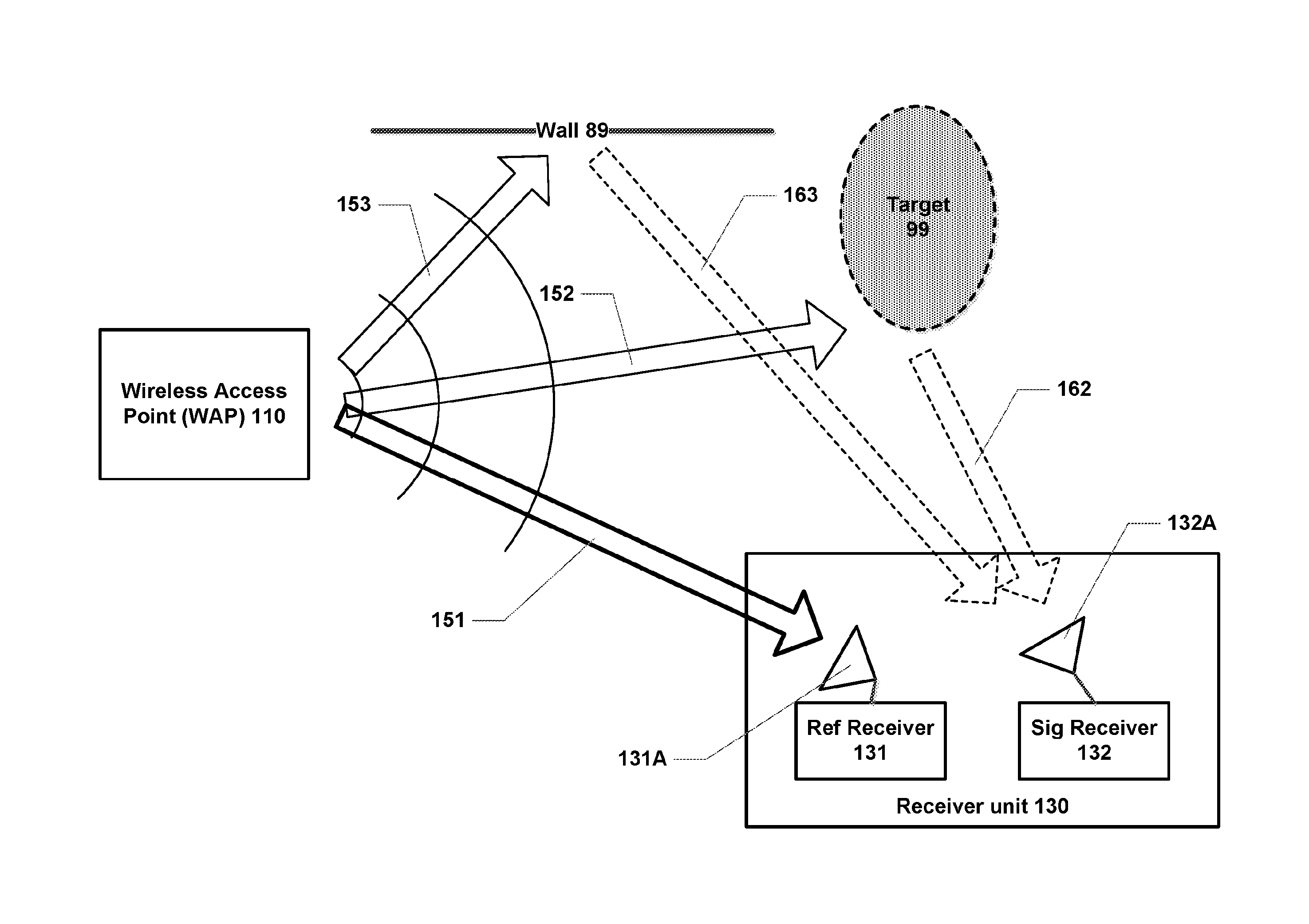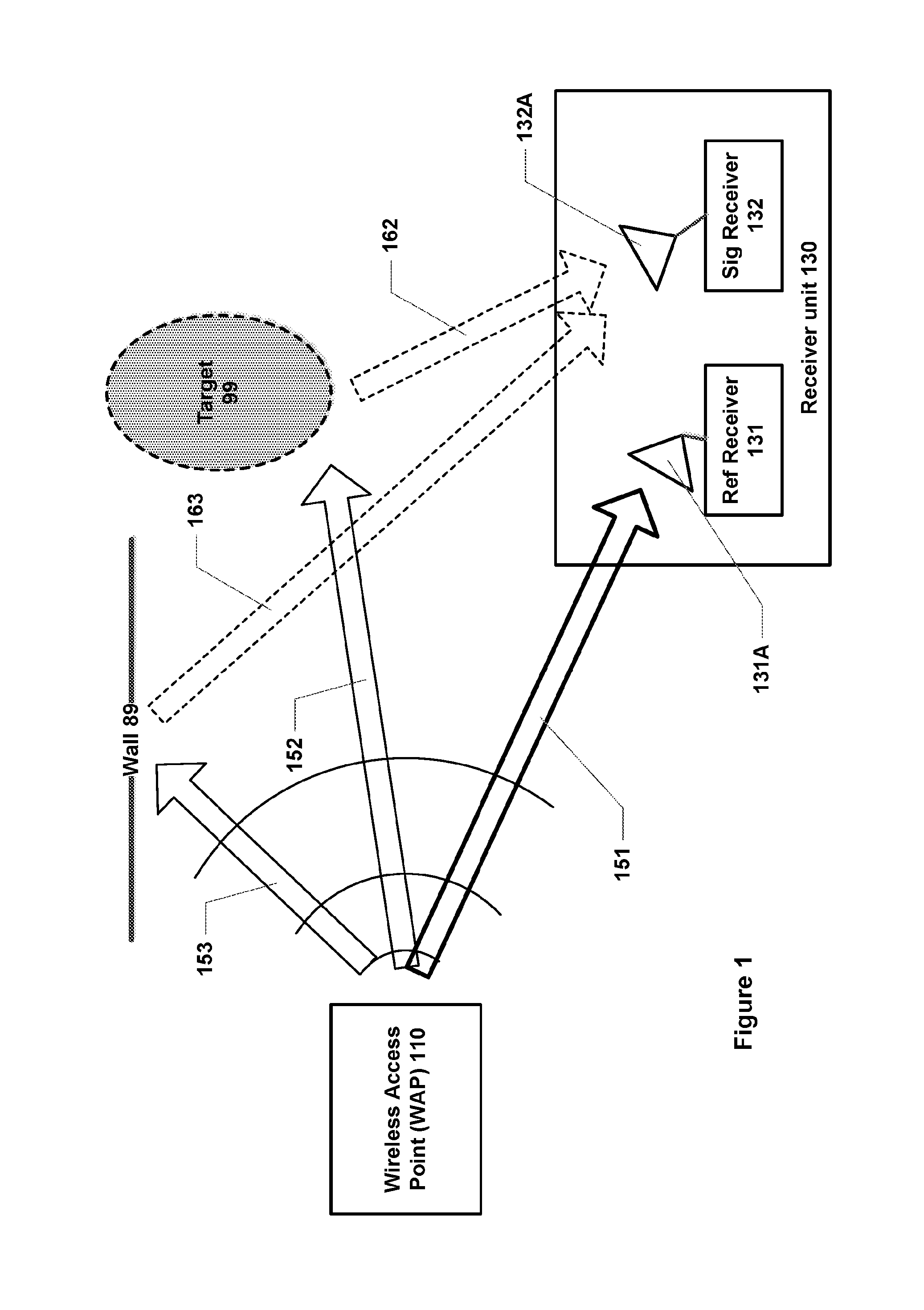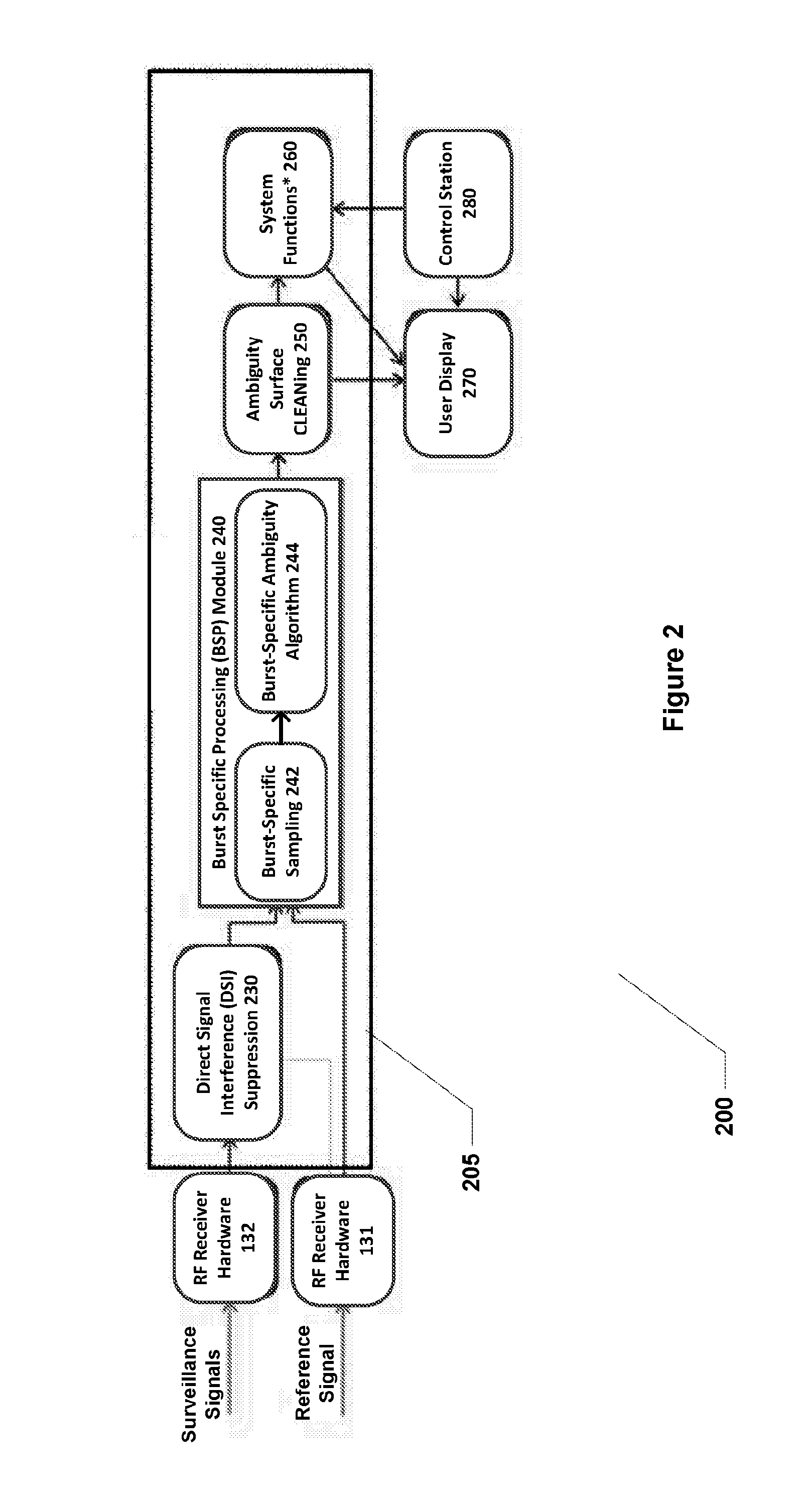Apparatus and method for performing passive sensing
a passive sensing and apparatus technology, applied in the direction of instruments, measurement devices, using reradiation, etc., can solve the problems of inability to determine whether surveillance is being performed, the receipt of direct transmitted signals is an unwanted and problematic component, and it is difficult to perform passive sensing in a real-time dynamic context, so as to reduce the cost and complicate the exploitation of other data
- Summary
- Abstract
- Description
- Claims
- Application Information
AI Technical Summary
Benefits of technology
Problems solved by technology
Method used
Image
Examples
Embodiment Construction
[0032]FIG. 1 is a general schematic illustration of passive sensing in accordance with some embodiments of the invention. It is assumed that a wireless access point (WAP) 110 exists at a given location. It will be appreciated that such wireless access points are very common, especially in urban settings, often to provide wireless local area network (WLAN) connectivity in accordance with the IEEE 802.11 standard (also referred to as “W-Fi”). As specified in the IEEE 802.11 standard, WAP 110 emits a beacon signal having a predetermined structure and content on a regular basis to allow devices within range to discover and connect to the wireless access point. WAP 110 also transmits and receives signals as part of two-way communications with any device that has connected to the wireless access point. Again, these communications have a predetermined structure (and, in part, content) according to the IEEE 802.11 standard. Note that the wireless access point 110 generally has low direction...
PUM
 Login to View More
Login to View More Abstract
Description
Claims
Application Information
 Login to View More
Login to View More - R&D
- Intellectual Property
- Life Sciences
- Materials
- Tech Scout
- Unparalleled Data Quality
- Higher Quality Content
- 60% Fewer Hallucinations
Browse by: Latest US Patents, China's latest patents, Technical Efficacy Thesaurus, Application Domain, Technology Topic, Popular Technical Reports.
© 2025 PatSnap. All rights reserved.Legal|Privacy policy|Modern Slavery Act Transparency Statement|Sitemap|About US| Contact US: help@patsnap.com



